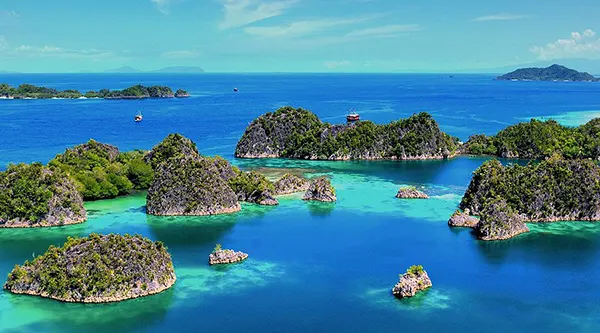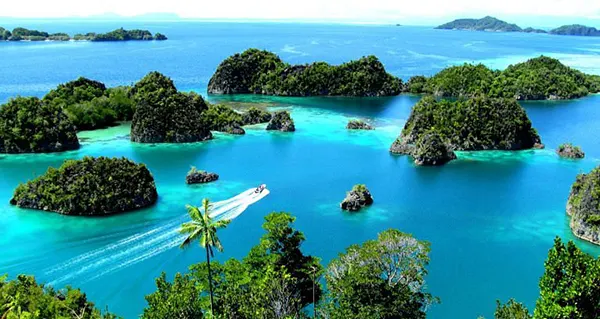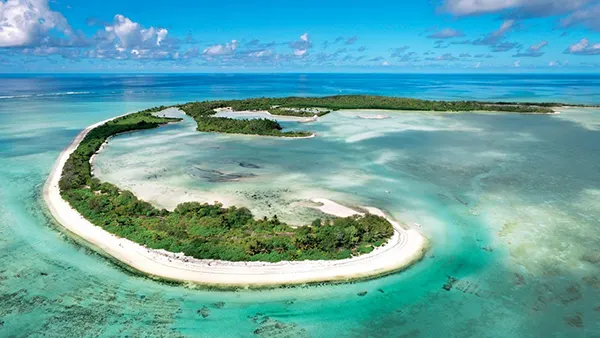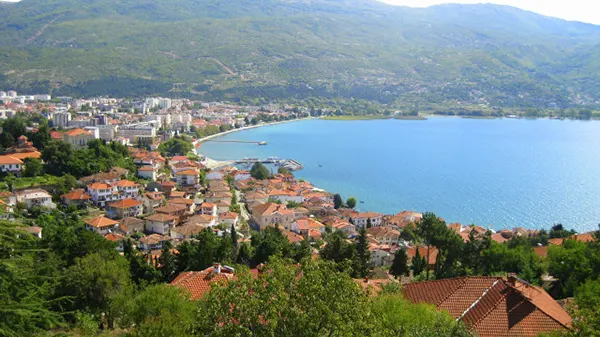
Raja Ampat – A Paradise for Divers and Nature Enthusiasts
Located off the northwest tip of the Bird’s Head Peninsula on the island of New Guinea, Raja Ampat is one of the most biodiverse marine regions on Earth. With its pristine waters, vibrant coral reefs, and unspoiled landscapes, it draws divers, snorkelers, and eco-tourists from across the globe. As of February 2025, this Indonesian archipelago remains a haven for those seeking a close encounter with nature in its purest form.
Marine Biodiversity Beyond Compare
Raja Ampat lies within the Coral Triangle, an area recognised as the global centre of marine biodiversity. According to recent data from Conservation International, over 600 species of coral and 1,700 species of reef fish inhabit these waters, making it the richest marine ecosystem in the world. This staggering variety is largely attributed to the region’s complex ocean currents and nutrient flow, which sustain both large and small marine life.
In February 2025, researchers from the Indonesian Institute of Sciences (LIPI) confirmed the discovery of several new species in the area, highlighting Raja Ampat’s status as an evolving marine laboratory. Among these are previously unidentified varieties of pygmy seahorses and reef-dwelling gobies. Such discoveries underscore the urgent need for conservation and responsible tourism practices in the region.
The reefs are also home to endangered species such as manta rays, hawksbill turtles, and dugongs. These creatures thrive here thanks to Indonesia’s marine protected areas and local community-led conservation efforts. The Misool Marine Reserve, for example, continues to be a successful model of community-based reef protection and sustainable tourism.
Snorkelling and Diving Experiences
For divers, Raja Ampat offers a surreal underwater experience unmatched elsewhere. Sites like Cape Kri and Blue Magic provide the chance to see large schools of barracudas, wobbegong sharks, and even oceanic mantas. With visibility often exceeding 25 metres and warm water temperatures year-round, conditions are ideal for all levels of divers.
Snorkelling is just as rewarding, especially around shallow reef flats near islands such as Gam and Arborek. These areas are renowned for their colourful corals and swarms of reef fish visible just a few metres below the surface. Local operators have invested in eco-friendly boat technology, reducing anchor damage and carbon footprint during excursions.
By 2025, several new dive resorts have implemented “zero single-use plastic” policies and collaborate with local rangers to educate visitors about marine preservation. These joint efforts aim to protect the delicate reef systems while maintaining the area’s appeal as a premier diving destination.
Pristine Islands and Unique Ecosystems
Raja Ampat is not just about what lies beneath the sea; its above-water landscapes are equally stunning. The archipelago comprises over 1,500 small islands, cays, and shoals, many of which are uninhabited and remain ecologically intact. Dense tropical forests, limestone cliffs, and hidden lagoons are signature features of the region’s terrain.
Several of the islands are home to endemic bird species, such as the Wilson’s Bird-of-Paradise and Red Bird-of-Paradise, which can be spotted during guided treks at dawn. These birdwatching expeditions have grown in popularity in recent years, attracting nature lovers from around the world.
February 2025 marked the start of a new conservation programme launched by the Indonesian Ministry of Environment and Forestry. This initiative funds reforestation and wildlife protection projects on Batanta and Waigeo Islands, aiming to balance eco-tourism growth with habitat preservation. The programme also promotes sustainable farming and supports indigenous communities in the region.
Eco-Friendly Accommodation and Local Involvement
Eco-lodges in Raja Ampat, such as Papua Explorers and Biodiversity Nature Resort, are designed with sustainability at their core. Built using local materials and traditional methods, these lodges minimise environmental impact while supporting local craftsmanship. They offer authentic experiences, from local cuisine to cultural immersion activities.
Tourism initiatives in the region strongly emphasise community involvement. Villages like Sawinggrai and Yenbuba have become hubs of eco-tourism, where guests can participate in conservation projects or take part in cultural workshops, such as batik-making and traditional dancing.
By February 2025, new cooperative models between tourism operators and indigenous Papuan communities have been implemented. These models ensure fair income distribution and empower locals to play a leading role in decision-making processes related to tourism and environmental management.

Planning Your Visit Responsibly
Visiting Raja Ampat requires careful preparation. The region is best accessed via Sorong in West Papua, with onward boat travel arranged through registered tour operators. The Raja Ampat Marine Park Entry Permit, a conservation fee, is mandatory for all international visitors and contributes directly to local conservation and infrastructure.
As tourism grows, visitors are encouraged to adhere strictly to eco-tourism guidelines. These include refraining from touching corals, avoiding sunscreen that contains harmful chemicals, and participating in local conservation briefings. Operators provide eco-packs with reef-safe sunscreen and reusable water bottles to minimise waste.
In February 2025, Indonesia launched an updated marine tourism policy applicable to Raja Ampat, reinforcing the requirement for sustainability certifications for all operators. This policy also includes stricter oversight of marine park fees and transparent reporting of how funds are used to support environmental and community projects.
When to Go and What to Expect
The best time to visit Raja Ampat is during the dry season, which runs from October to April. February falls squarely within this window, offering calm seas, excellent visibility, and ideal weather conditions for both diving and trekking.
Travelers can expect a laid-back, unplugged experience. Electricity may be limited to certain hours, and Wi-Fi access is minimal. However, the trade-off is immersion in nature’s raw beauty, from phosphorescent plankton lighting up the waters at night to the chorus of jungle wildlife at dawn.
In 2025, Raja Ampat remains a model of how eco-tourism can thrive while safeguarding irreplaceable natural heritage. For those who value biodiversity, sustainability, and authentic local engagement, this archipelago continues to stand as one of the most rewarding destinations on the planet.
Popular articles
-
Outer Islands Seychelles: The Un...
The northern segment of the Outer …

-
Ohrid, North Macedonia — A Timel...
Ohrid is one of the oldest …

-
The biggest and most famous casinos
In recent times, fans of the …

